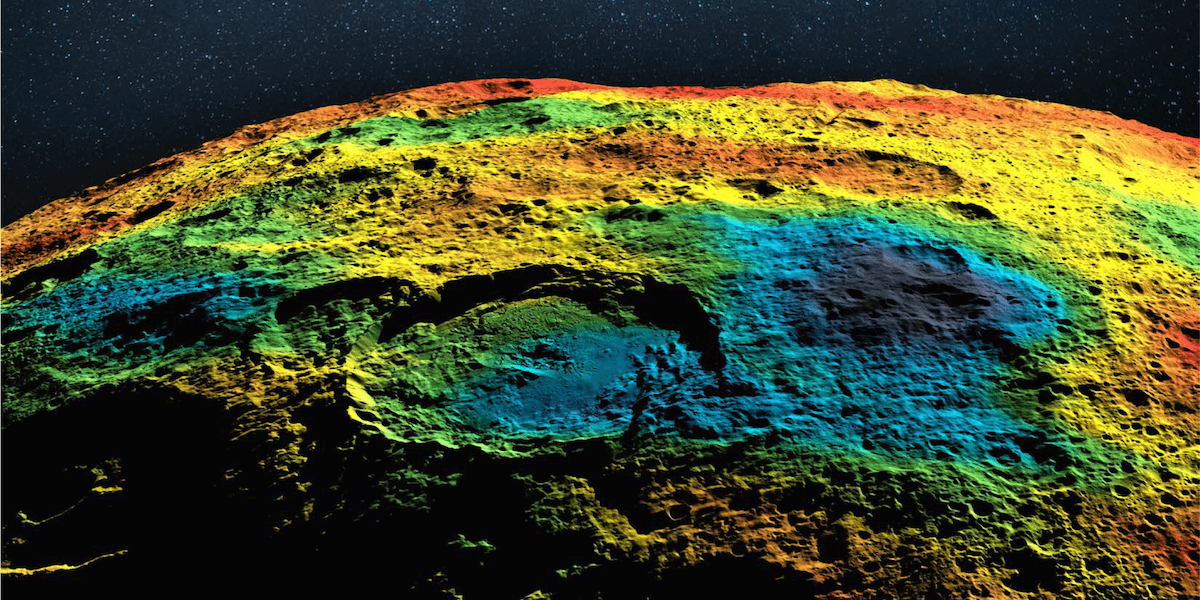
Ceres. Photo/Anton Ermakov (UC-Berkeley) and Nicole Sabsook (JPL)
Among the wide expanses of the solar system lives Ceres, which has the distinction of being both the smallest known dwarf planet and the largest object in the asteroid belt. In 2015, NASA launched a mission—Dawn—to explore Ceres from orbit, and USC Viterbi Adjunct Associate Professor Ryan Park was the lead of Dawn’s gravity science investigation. Responsible for computing the gravity field, rotation and ephemeris of Ceres, Park helped the team realize that Ceres is much more complicated than previously understood.
Space, after all, is constantly being newly discovered and even still, we know so little about what lurks beyond our atmosphere. A burning question linked to studies on Ceres which had yet to be answered: Is there liquid inside Ceres, and how long ago was the dwarf planet geologically active?
In research published in Nature Astronomy, Park, who has been recently appointed a Jet Propulsion Laboratory (JPL) Principal engineer, along with a team of scientists confirmed Ceres is a water-rich world like other icy bodies. This research focuses largely on data acquired from the Occator Crater, which has the most extensive of serious “bright spots.” The bright areas are deposits made mostly of sodium carbonate—a compound of sodium, carbon and oxygen.
The team included scientists from JPL, Harvard University, Georgia Institute of Technology, Planetary Science Institute, and University of Arizona.
According to the JPL press release: “On Ceres’ surface, salts bearing water quickly dehydrate, within hundreds of years. But Dawn’s measurements show they still have water, so the fluids must have reached the surface very recently. This is evidence both for the presence of liquid below the region of Occator Crater and ongoing transfer of material from the deep interior to the surface.”
This means not only is there liquid, but there is also evidence of more recent geological activity.
What’s in a Bright Spot
Long observed on the surface of Ceres, “bright spots” are made of deposits of mostly sodium carbonate—a compound of sodium, carbon and oxygen, Park said. These spots likely came from liquid that rose up to the surface and evaporated, leaving behind a highly reflective salt crust.
But where did that liquid come from?
Dawn scientists, including Park, concluded that the liquid came from a deep reservoir of salt-enriched water that they estimate is about 25 miles deep and hundreds of miles wide.
The Role of Ice
The detailed gravity map obtained from the Dawn mission supports the significant role of ice in shaping Ceres’ structure.
Located in the inner reaches of the solar system, Ceres’ crust is denser at depth (meaning the shallower the crust, the less dense it is), suggesting that salts and silicates were concentrated in the liquid phase while the crust was growing, Park said.
“The new gravity map also showed that the crustal density of Ceres varies latitudinally in a way similar to the distribution of impact craters on the surface, implying the importance of impacts shaping the evolution of solar system bodies,” Park said.
The gravity map revealed, for the first time, a complex crustal structure of an ice-rich solar system body, Park said. In it, Ceres appears to have large-scale porosity variations, density gradients and local associations of dome, ice and carbonate, which attest to a complex internal evolution.
The gravity map is based on data acquired at a low altitude, where the signal is stronger, during Dawn’s final mission phase. “This data,” Park said, “provides context for interpreting the mission observations and sets the standard for the future exploration of ice-rich bodies.”
Published on October 8th, 2020
Last updated on October 8th, 2020












